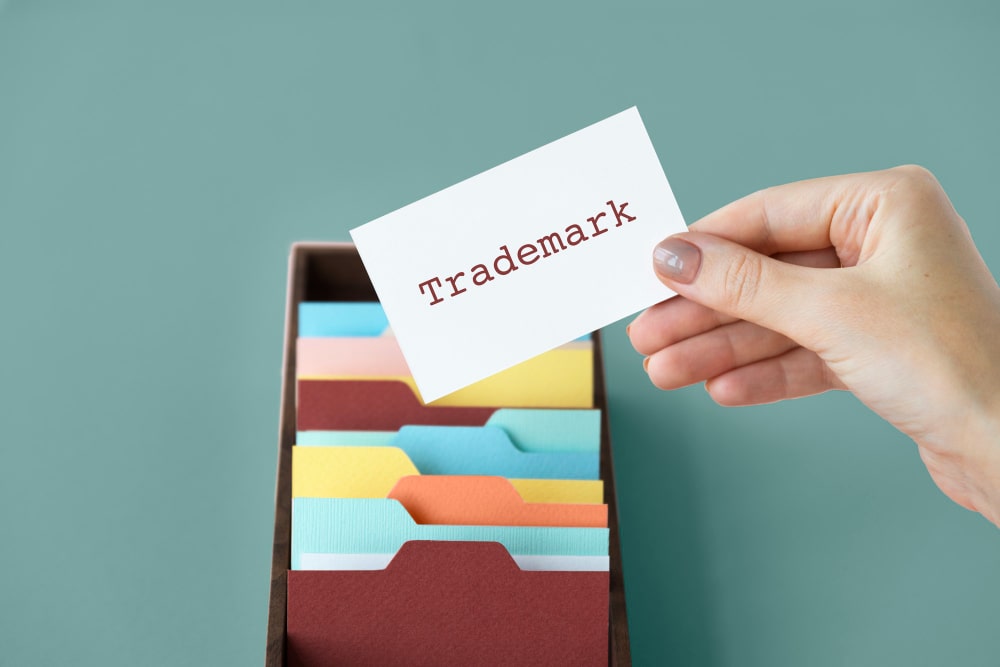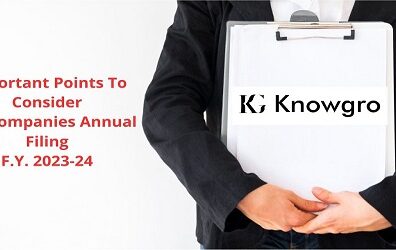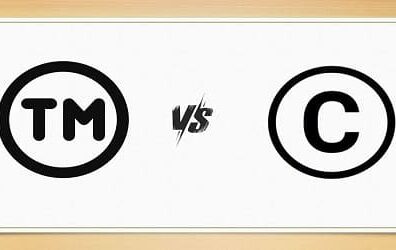Understanding Trademark Registration In India: A Comprehensive Guide

What is a Trademark
In layman’s terms, a trademark is also known as a brand. A trademark is defined as a mark capable of being represented visually and capable of differentiating one person’s goods or services from those of others in the market, and may include the shape of goods, their packaging, and color combination.
The purpose of trademarks is to allow customers to identify the source of goods or services and differentiate them from those of others in the sector. Trademark registration can be secured for a business name, distinctive catch phrases, taglines, captions, and logos, or anything else that helps your business or product stand out from the competition.
Difference between a Word Mark and Device Mark
There are two kinds of trademarks, as mentioned below:
- Word Mark: A word mark is a Trademark in which the Trademark owner has exclusive rights to the word in its whole and can represent the word in any font, format, or other manner. The Trademark Registration protects all appearances and uses of the word. After registering a word mark, it can be used in any way for all of the goods and services covered by it. When the focus of the business owner is to protect the name of the business or product from infringement, it is always recommended to proceed with the word mark registration.
- Device Mark/Logo: A Device Mark/Logo, on the other hand, grants the trademark holder the right to a specific mix of pictures, design, and language. As a result, the protection afforded to the words contained in a Device Mark/Logo is restricted in comparison to that afforded to a word mark, because rights in a logo are granted only to the logo as a whole, rather than to an individual word. If you have created a distinctive and appealing brand and want your customers to notice you, Device Mark/brand Registration is the ideal alternative. Adidas, Nike, Reebok, Audi, Mercedes, Apple, and many other well-known corporations have their logos as trademarks.
It is up to you to decide whether to file for a Word Mark or a Device Mark/Logo. If money is an issue and brand name protection is critical, it is always recommended to go with Word Mark Registration. Filing a Device Mark/Logo is recommended when the owner has produced a distinctive logo for his business and does not want anybody else in the same line of business to use a similar logo. If a registered logo is changed in the future, trademark protection is not awarded to the new logo, and the owner of the firm must file for a new logo if he seeks trademark protection.
As a result, Trademark Registration for a Device Mark/Logo can be costly and is recommended only if you are willing to invest a significant amount of money. Small businesses should always go for a Word Mark Registration and, in the future, if they desire a different logo for the business, the same can be filed.
Other Type Of Trademarks
Aside from word marks and device marks/logos, there are the following sorts of trademarks.
- Sound Mark: In India, sound marks can be registered if the sound helps to identify the origin of goods or services. The sound should be distinct and capable of creating recall value for items and services, allowing buyers to associate such sound with your goods/services. Yahoo, Nokia, and Britannia are some examples of registered sound marks in India.
- Color: If a color combination or pattern helps to identify the origin of products or services, it can be registered as a trademark. It is one of the most difficult categories of trademark registration, with only 9 businesses having successfully registered their color trademark to far. In India, registered color marks include Cadbury Royal Purple, Barbie Pink, and others.
- Shape of Goods : The shape of a product or the container it is provided in may aid in determining the origin of products or services. If the shape of a good or container has become recognizable as a result of broad use, it might be registered as a trademark. The Coca-Cola Bottle is a well-known example of such trademark registration.
- Three Dimensional Mark : Three-dimensional markings that are distinct and can aid in determining the origin of products and services can be registered as trademarks in India. To register a three-dimensional mark, the mark or shape must be significantly distinct from what is presently on the market.
Trademark Registration Process
The trademark registration process takes 6 months to 2 years from the date of filing, depending on the departmental pendency. Despite the fact that the filing can be done on the same day and easily confirmed online on the Government’s website.
Once the application has been filed, the Trademark Department may issue an Examination Report to raise objections to the application. The reply to the examination report must be provided within 30 days of its issuance or the application would be abandoned by the department.
Once your application is cleared of Departmental objections, or if no examination report is issued, the trademark details are published on the Government’s Trademark registry website in the weekly Trademark Journal and are open for public opposition for 4 months from publication; if no oppositions are filed, the trademark application is registered for a period of 10 years.
Trademark Classes
Before proceeding with the Trademark registration process, it Is necessary to know the exact class in which trademark needs to be filed. The trademark class is also important so that the applicant can make a comprehensive search in the relevant class for checking the availability of the mark to be filed. The Trademark classes as per NICE classification are given below:
Goods Classes
Trademark Class | Description |
Class 1 | Chemicals for use in industry, science and photography, as well as in agriculture, horticulture and forestry; unprocessed artificial resins, unprocessed plastics; fire extinguishing and fire prevention compositions; tempering and soldering preparations; substances for tanning animal skins and hides; adhesives for use in industry; putties and other paste fillers; compost, manures, fertilizers; biological preparations for use in industry and science. |
Class 2 | Paints, varnishes, lacquers; preservatives against rust and against deterioration of wood; colorants, dyes; inks for printing, marking and engraving; raw natural resins; metals in foil and powder form for use in painting, decorating, printing and art. |
Class 3 | Non-medicated cosmetics and toiletry preparations; non-medicated dentifrices; perfumery, essential oils; bleaching preparations and other substances for laundry use; cleaning, polishing and abrasive preparations. |
Class 4 | Industrial oils and greases, wax; lubricants; dust absorbing, wetting and binding compositions; fuels and illuminants; candles and wicks for lighting. |
Class 5 | Pharmaceuticals, medical and veterinary preparations; sanitary preparations for medical purposes; dietetic food and substances adapted for medical or veterinary use, food for babies; dietary supplements for human beings and animals; plasters, materials for dressings; material for stopping teeth, dental wax; disinfectants; preparations for destroying vermin; fungicides, herbicides. |
Class 6 | Common metals and their alloys, ores; metal materials for building and construction; transportable buildings of metal; non-electric cables and wires of common metal; small items of metal hardware; metal containers for storage or transport; safes. |
Class 7 | Machines, machine tools, power-operated tools; motors and engines, except for land vehicles; machine coupling and transmission components, except for land vehicles; agricultural implements, other than hand-operated hand tools; incubators for eggs; automatic vending machines. |
Class 8 | Hand tools and implements, hand-operated; cutlery; side arms, except firearms; razors. |
Class 9 | Scientific, research, navigation, surveying, photographic, cinematographic, audiovisual, optical, weighing, measuring, signalling, detecting, testing, inspecting, life-saving and teaching apparatus and instruments; apparatus and instruments for conducting, switching, transforming, accumulating, regulating or controlling the distribution or use of electricity; apparatus and instruments for recording, transmitting, reproducing or processing sound, images or data; recorded and downloadable media, computer software, blank digital or analogue recording and storage media; mechanisms for coin-operated apparatus; cash registers, calculating devices; computers and computer peripheral devices; diving suits, divers’ masks, ear plugs for divers, nose clips for divers and swimmers, gloves for divers, breathing apparatus for underwater swimming; fire-extinguishing apparatus. |
Class 10 | Surgical, medical, dental and veterinary apparatus and instruments; artificial limbs, eyes and teeth; orthopaedic articles; suture materials; therapeutic and assistive devices adapted for persons with disabilities; massage apparatus; apparatus, devices and articles for nursing infants; sexual activity apparatus, devices and articles. |
Class 11 | Apparatus and installations for lighting, heating, cooling, steam generating, cooking, drying, ventilating, water supply and sanitary purposes. |
Class 12 | Vehicles; apparatus for locomotion by land, air or water. |
Class 13 | Firearms; ammunition and projectiles; explosives; fireworks. |
Class 14 | Precious metals and their alloys; jewellery, precious and semi-precious stones; horological and chronometric instruments. |
Class 15 | Musical instruments; music stands and stands for musical instruments; conductors’ batons. |
Class 16 | Paper and cardboard; printed matter; bookbinding material; photographs; stationery and office requisites, except furniture; adhesives for stationery or household purposes; drawing materials and materials for artists; paintbrushes; instructional and teaching materials; plastic sheets, films and bags for wrapping and packaging; printers’ type, printing blocks. |
Class 17 | Unprocessed and semi-processed rubber, gutta-percha, gum, asbestos, mica and substitutes for all these materials; plastics and resins in extruded form for use in manufacture; packing, stopping and insulating materials; flexible pipes, tubes and hoses, not of metal. |
Class 18 | Leather and imitations of leather; animal skins and hides; luggage and carrying bags; umbrellas and parasols; walking sticks; whips, harness and saddlery; collars, leashes and clothing for animals. |
Class 19 | Materials, not of metal, for building and construction; rigid pipes, not of metal, for building; asphalt, pitch, tar and bitumen; transportable buildings, not of metal; monuments, not of metal. |
Class 20 | Furniture, mirrors, picture frames; containers, not of metal, for storage or transport; unworked or semi-worked bone, horn, whalebone or mother-of-pearl; shells; meerschaum; yellow amber. |
Class 21 | Household or kitchen utensils and containers; cookware and tableware, except forks, knives and spoons; combs and sponges; brushes, except paintbrushes; brush-making materials; articles for cleaning purposes; unworked or semi-worked glass, except building glass; glassware, porcelain and earthenware. |
Class 22 | Ropes and string; nets; tents and tarpaulins; awnings of textile or synthetic materials; sails; sacks for the transport and storage of materials in bulk; padding, cushioning and stuffing materials, except of paper, cardboard, rubber or plastics; raw fibrous textile materials and substitutes therefor. |
Class 23 | Yarns and threads for textile use. |
Class 24 | Textiles and substitutes for textiles; household linen; curtains of textile or plastic. |
Class 25 | Clothing, footwear, headwear. |
Class 26 | Lace, braid and embroidery, and haberdashery ribbons and bows; buttons, hooks and eyes, pins and needles; artificial flowers; hair decorations; false hair. |
Class 27 | Carpets, rugs, mats and matting, linoleum and other materials for covering existing floors; wall hangings, not of textile. |
Class 28 | Games, toys and playthings; video game apparatus; gymnastic and sporting articles; decorations for Christmas trees. |
Class 29 | Meat, fish, poultry and game; meat extracts; preserved, frozen, dried and cooked fruits and vegetables; jellies, jams, compotes; eggs; milk, cheese, butter, yogurt and other milk products; oils and fats for food. |
Class 30 | Coffee, tea, cocoa and substitutes therefor; rice, pasta and noodles; tapioca and sago; flour and preparations made from cereals; bread, pastries and confectionery; chocolate; ice cream, sorbets and other edible ices; sugar, honey, treacle; yeast, baking-powder; salt, seasonings, spices, preserved herbs; vinegar, sauces and other condiments; ice (frozen water). |
Class 31 | Raw and unprocessed agricultural, aquacultural, horticultural and forestry products; raw and unprocessed grains and seeds; fresh fruits and vegetables, fresh herbs; natural plants and flowers; bulbs, seedlings and seeds for planting; live animals; foodstuffs and beverages for animals; malt. |
Class 32 | Beers; non-alcoholic beverages; mineral and aerated waters; fruit beverages and fruit juices; syrups and other preparations for making non-alcoholic beverages. |
Class 33 | Alcoholic beverages, except beers; alcoholic preparations for making beverages. |
Class 34 | Tobacco and tobacco substitutes; cigarettes and cigars; electronic cigarettes and oral vaporizers for smokers; smokers’ articles; matches. |
Service Classes
Trademark Class | Description |
Class 35 | Advertising; business management, organization and administration; office functions. |
Class 36 | Financial, monetary and banking services; insurance services; real estate services. |
Class 37 | Construction services; installation and repair services; mining extraction, oil and gas drilling. |
Class 38 | Telecommunications services. |
Class 39 | Transport; packaging and storage of goods; travel arrangement. |
Class 40 | Treatment of materials; recycling of waste and trash; air purification and treatment of water; printing services; food and drink preservation. |
Class 41 | Education; providing of training; entertainment; sporting and cultural activities. |
Class 42 | Scientific and technological services and research and design relating thereto; industrial analysis, industrial research and industrial design services; quality control and authentication services; design and development of computer hardware and software. |
Class 43 | Services for providing food and drink; temporary accommodation. |
Class 44 | Medical services; veterinary services; hygienic and beauty care for human beings or animals; agriculture, aquaculture, horticulture and forestry services. |
Class 45 | Legal services; security services for the physical protection of tangible property and individuals; dating services, online social networking services; funerary services; babysitting. |
Conclusion
Trademark registration in India is a vital step in securing your brand’s identity and fostering a trustworthy business image. By understanding the process and following best practices, you can navigate the complexities of trademark registration successfully. Invest in protecting your brand, and enjoy the exclusive rights and recognition that come with a registered trademark.
Follow Us
Keep Yourself Updated By Following Us




